Read on as we walk you through all the steps, from choosing the paint to cleaning up when you're done.
A full day
Beginner
$50-75
Introduction
If there's a painting project in your near future, follow this step-by-step on what you'll need and how to plan and execute it.Watch How to Paint a Room
Tools Required
- Bucket
- Drop cloths
- Flexible putty knife
- Long-handled roller
- Paint brush
- Paint tray
- Roller frame
- Sponge
- Stepladder
Materials Required
- 1 gallon of paint
- Ceiling paint
- Masking paper
- Paint samples
- Paint stir sticks
- Painter's tape
- Stain-blocking primer
- Trim paint
- TSP or other heavy-duty wall cleaner
- two 6-in. 3/8-in.-nap roller sleeves
- Wall spackling compound
Project step-by-step (9)
Step 1
Choose a Color
- The first question to ask yourself even before you pick up a paintbrush is: How do I choose a paint color?
- Head to your home center or paint store and have them mix three or four color samples for you.
- Test your color samples on different parts of the room to get a feel for the paint colors. Keep in mind different lighting in the room will change the color drastically.
Bonus: You can also try the Amazon Paint Finder to easily find complementary shades in seconds.
Choose a Paint Finish
- Gloss finish is the most light-reflective of any paint choice and is easily washable. Great for wood trim, cabinets and doors.
- Semi-gloss finish is somewhat reflective, durable and helpful in areas that need to be cleaned regularly. Great for kitchens, bathrooms, closet doors, trim and utility areas.
- Satin finish has just a little shine so it’s easily cleaned. Also great for high-traffic areas like kids’ bedrooms, kitchens, living rooms, entryways and hallways. Here, learn how to decorate a hallway
- Matte and flat finishes absorb the light instead of reflecting it, so they work well on walls with imperfections. Great for bedrooms and any uneven walls, or walls with texture. Be sure to check our guide to paint finishes for walls.

Step 2
Protect Your Floors and Furniture
- Tape down masking paper or rosin paper to the floor and carpet along the baseboards to protect them from paint splatters and spills.
- Spread a drop cloth on the floor and over any furniture in the room you’re painting. Fabric drop cloths work better for this — they’re less slippery than plastic drop cloths.
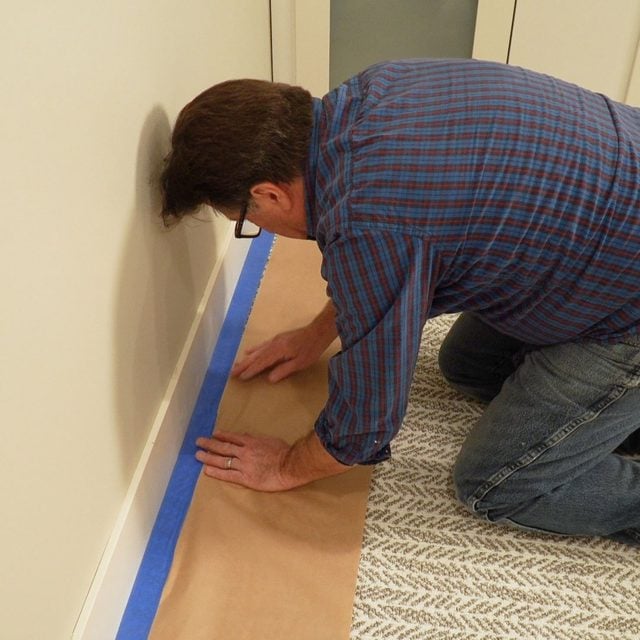
Step 3
Prep the Walls and Trim
- Before painting and patching, it’s a good idea to wash all the walls and trim with a heavy-duty cleaner such as TSP. Removing dirt and grease will let the paint stick better.
- Shine a utility light at the wall to get a closer look at the defects on the surface.
- Knock down any nail pops and bumps you find on the walls. Fill the holes and cracks with spackle or patching compound. Sand all patches smooth with sandpaper.
- Always apply a coat of primer over the patched areas before painting.
- Remove outlets and switch plates. Don’t forget to check out these tips for prepping walls for painting.
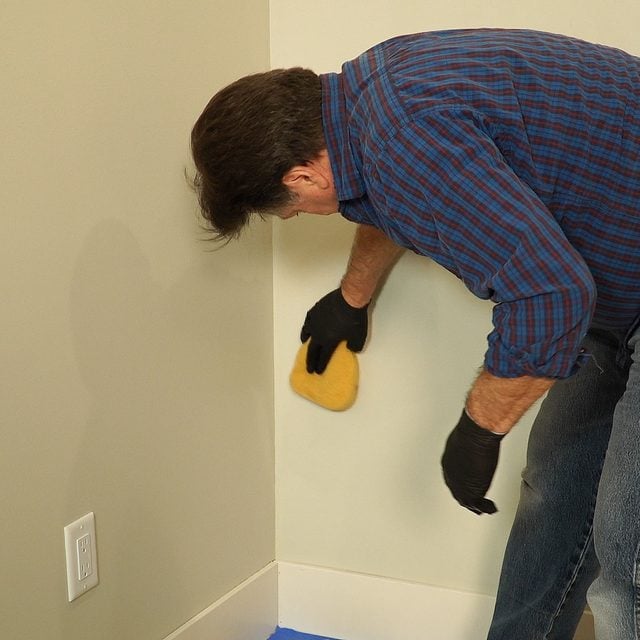
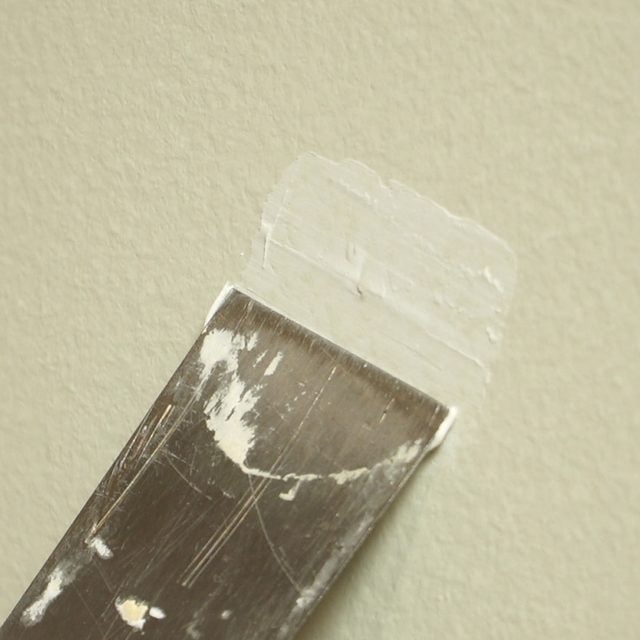
Step 4
Paint the Ceiling
- Painting the ceiling at this point will avoid paint splatters on your walls and trim.
- Pour about three cups of ceiling paint into a small container you can hold in one hand. Paint the edge of the ceiling along the perimeter of the whole room, using a 2-1/2-in. angled paintbrush. (This is called “cutting in.”)
- Use a 3/8-in. nap roller to paint the ceiling from one end of the room to the other. Roll the paint on in the same direction, one roller width at a time, overlapping the previous row. If a second coat is needed, roll the paint in the opposite direction you painted the first coat.
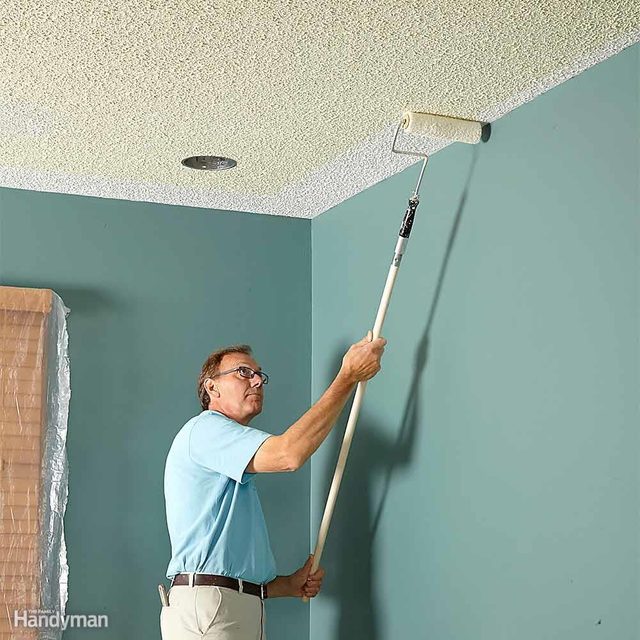
Step 5
Paint the Trim
- In most cases, paint the trim first before the walls. Let the paint dry, then tape off the trim and proceed to paint the walls. If the top edge of your trim isn’t wide enough to hold painter’s tape, paint the walls first, let the paint dry, then tape off the walls and proceed to paint the trim.
- A few things to think about before painting the trim. Are you painting just the trim or are you painting the windows and doors as well? Painting a door is much easier if you remove it first.
- Use high-quality semigloss acrylic enamel paint with a 2-1/2-in. angled paintbrush. Take your time, do a nice job and don’t be in a hurry.
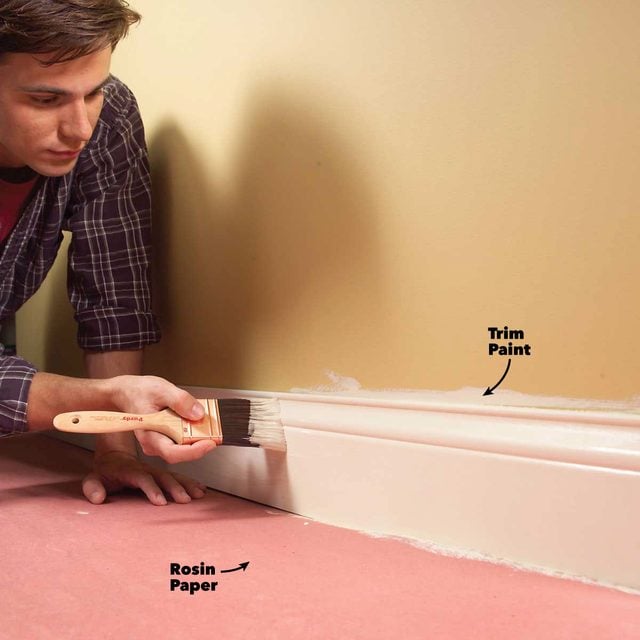
Step 6
Tape Along the Edges
- Apply painter’s tape (not masking tape) along the edges of the trim before painting the walls. Taping the perimeter of the ceiling will avoid brush and roller marks, resulting in a nice clean line between the walls and ceiling.
- Visit Family Handyman for more information about How to Choose and Use Painter’s Tape.
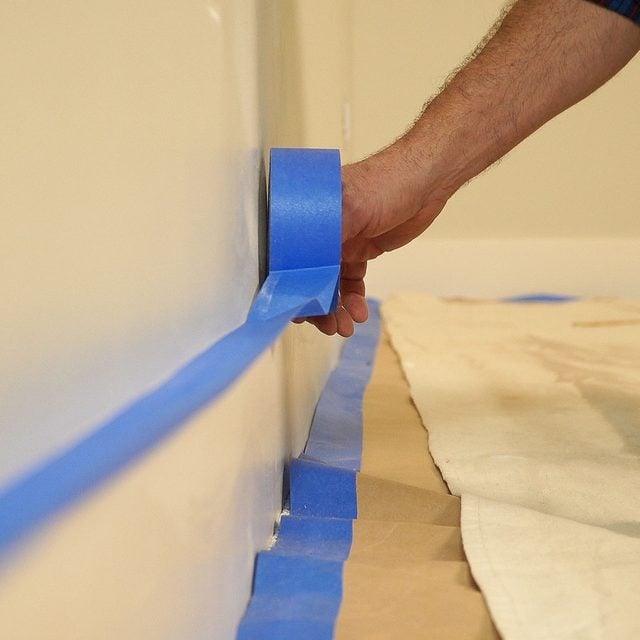
Step 7
Cut in the Walls
- It’s a good practice to cut in one wall at a time, then immediately roll out the wall while the cut-in paint is still wet. The cut-in paint will blend much better with the wall paint.
- As was mentioned in Step 4, pour about three cups of paint into a small container you can hold in one hand. Paint along the edges of trim and baseboards as well as around the perimeter of the ceiling, using a 2-1/2-in. angled paintbrush.
- Pro tip: Wrap your brush in plastic wrap or put it in a freezer bag to keep it from drying out between cut-in coats.
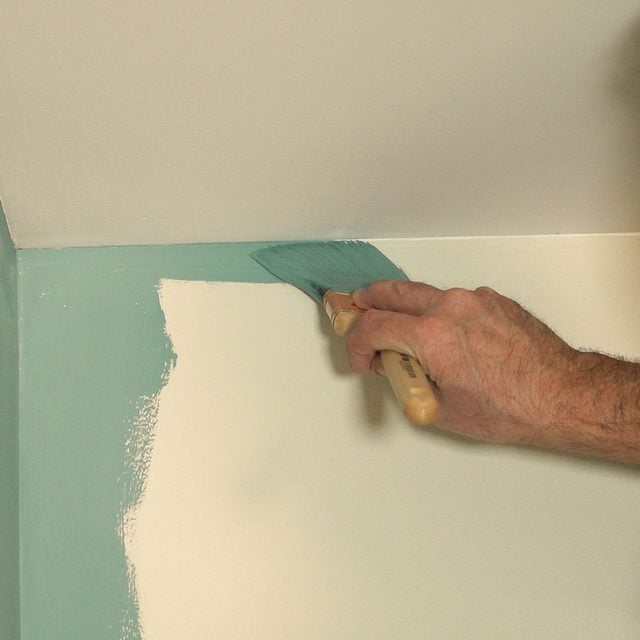
Step 8
Roll Paint the Walls
- Be sure to stir the paint with a paint stick before you start.
- Fill the roller tray a little over half-full with paint — too much paint in the tray may spill over.
- Load the roller with paint from the paint tray and roll paint on the wall from the baseboard to the ceiling. Roll straight back down without reloading the roller to ensure the wall is covered.
- Again, load the roller with paint and start a new row overlapping the previous one. Paint the full height of the wall. The edges of the roller tend to leave paint build-up lines. Roll back over the lines and blend them in with the rest of the paint. Also, know how to paint fast with a professional-quality finish, that you’ll be proud of.
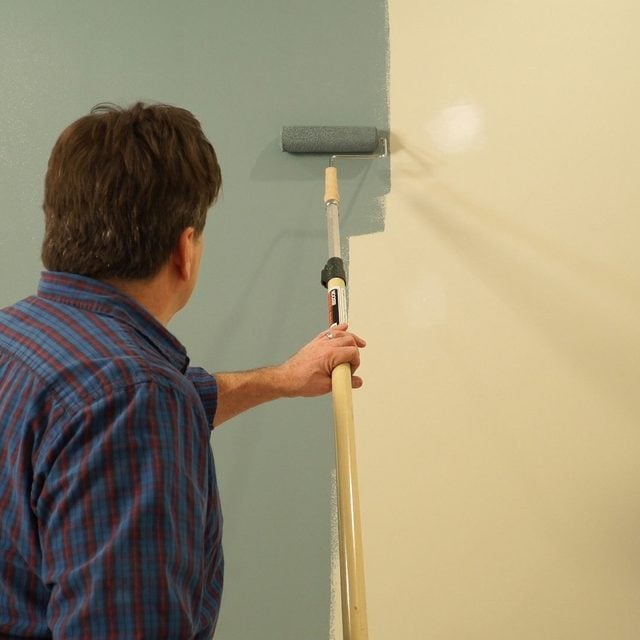
Step 9
Peel Tape and Clean Up
- Before peeling the tape from the trim and baseboards, score along the edge of the tape where it meets the wall using a flexible putty knife. (See photo.)
- Always thoroughly clean your brushes and rollers with hot soapy water.
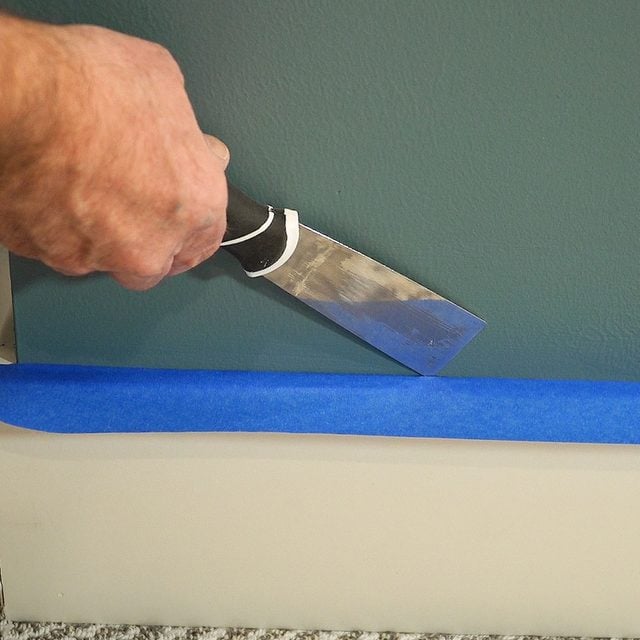
Pro tips:
- Have good light when painting – natural daylight is the best light.
- Always stir the paint for a good five minutes before painting.
- Pour all the gallons of paint into a five-gallon bucket to avoid different colors from gallon to gallon.
- Gather all the tools for the entire project before starting your project.
- Avoid paint freckles — wear a hat and paint clothes.
- Keep your paintbrush and rollers fresh in a sealable plastic bag.
- Keep a photo folder on your phone or computer of all the different paint labels.
- To learn more about painting, click on these Family Handyman articles: Painting Tips: How to Paint Faster; How to Paint: Tips for a Perfect Paint Job; How to Paint Walls: Prepare Interior Walls for Painting; and How to Choose Paint Colors.




















